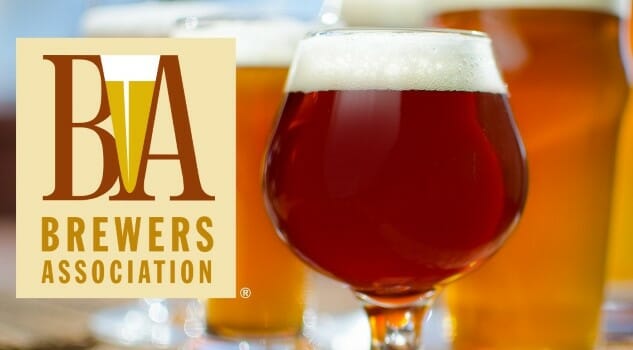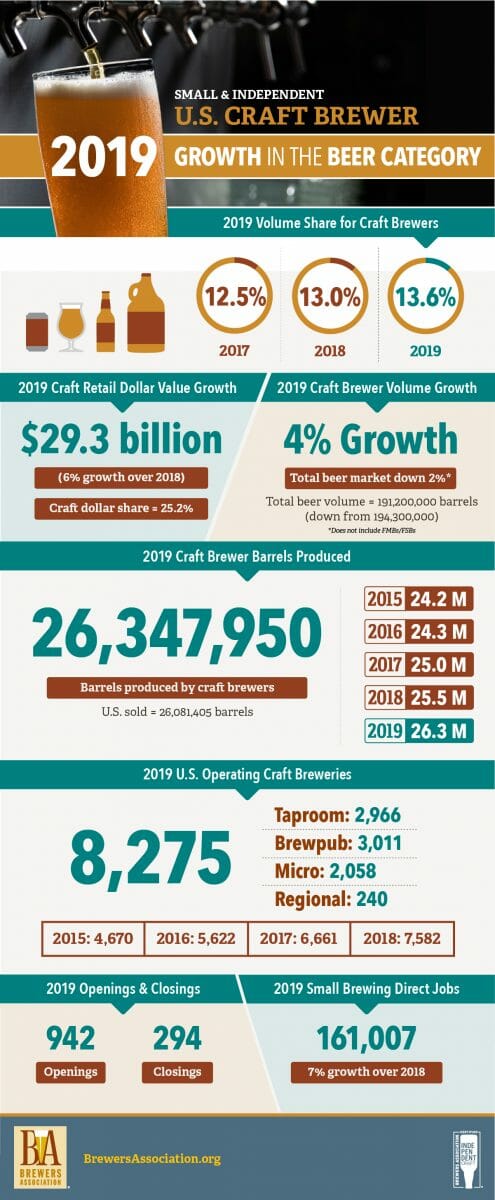Brewers Association Data Reveals Craft Beer Continued Growth in 2019 … But Can it Possibly Continue?
Photos via Brew
First, the good news: According to data collected by the Brewers Association, the Colorado-based trade association for “small and independent” American craft breweries, 2019 was ultimately another year of growth for the “better beer” industry. Throughout the year, small and independent brewers (as defined by the BA) produced 26.3 million barrels of beer, which was a volume growth of just under 4%. This continued the trend of slowing overall rate of growth as the segment matures, but likewise continued craft beer’s growth as a percentage of total beer market share. That number went from 13% in 2018, to 13.6% in 2019, a not-insignificant increase. Also increasing: Retail dollar value, which rose 6% to $29.3 billion, which is 25.2% of the beer market share. Craft breweries also provided more direct jobs than ever, with the new mark of 160,000 representing a 7% increase from 2018.
“Small and independent brewers continued to serve as job creators, strong economic contributors, and community beacons in 2019, while craft maintained a fairly stable growth rate in 2019 and continued to gain share in the beer market,” said Bart Watson, chief economist for the Brewers Association in the group’s annual release of the statistics.
Other significant numbers include the following: There were 8,275 craft breweries in operation in 2019, a number that skyrocketed throughout the decade, with 942 new brewery openings and 294 closing in 2019. As recently as 2015, there were only 4,670, according to the same Brewers Association data.
Now, the likely cause for alarm: It can probably be assumed that 2019 will go down in the books as the last year of consecutive, steady volume increases as far as craft beer is concerned. Between changes to the beer market, changes in brewery ownership, and the devastating effects of coronavirus/COVID-19 on the hospitality industry, we should likely be expecting 2020’s numbers to look quite a lot different. The BA’s release essentially acknowledges as much.
-

-

-

-

-

-

-

-

-

-

-

-

-

-

-

-

-

-

-

-

-

-

-

-

-

-

-

-

-

-

-

-

-

-

-

-

-

-

-

-









































